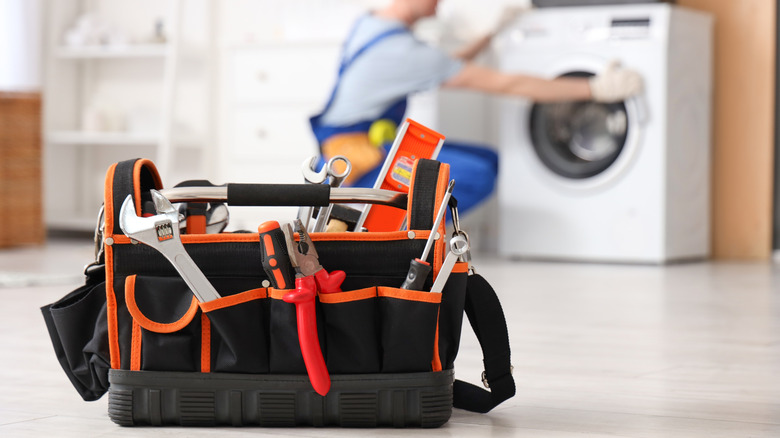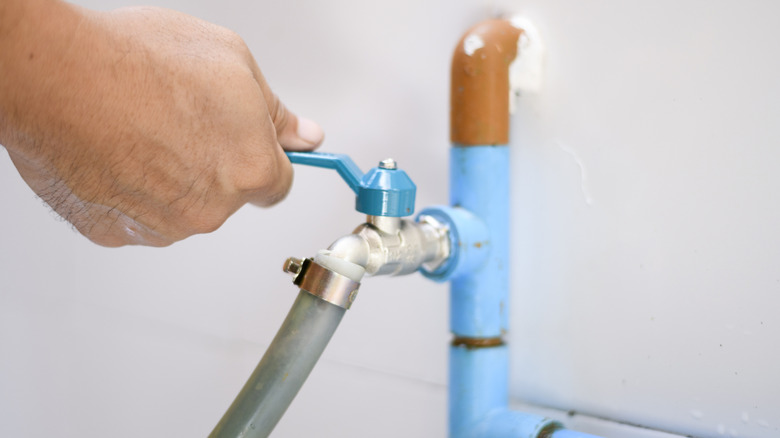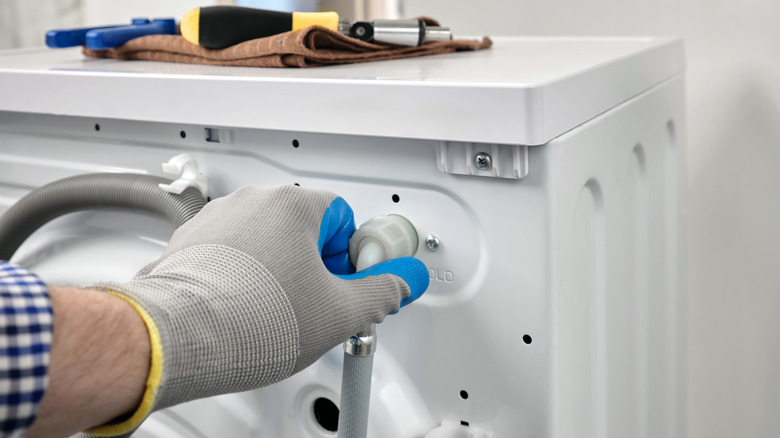The One Mistake You Could Be Making That Will Add Additional Cost To A Washer/dryer Repair
A bursting pipe, a toilet that won't stop leaking, a broken valve, or a stuck faucet — these are the kinds of plumbing nightmares that every homeowner dreads. Not only are they a major source of frustration and water damage, but they also come with a hefty price tag. What's even more frustrating is when the damage is preventable. A common mistake that homeowners make is leaving their washer or dryer's hot and cold water supplies open all the time. This matters because if your house has hard water, like most American homes, the constant flow can lead to mineral buildup, which may freeze an unused valve or clog the pipes.
In emergencies, you'd want to shut off those supplies immediately to protect your expensive appliances and prevent water damage to your property, but if the valves are stuck, you can't. This simple oversight can quickly turn into a costly plumbing issue, with valve repair or replacement alone reaching hundreds of dollars. Luckily, this issue is an easy fix, and taking action now can save you both time and money when emergencies strike.
A simple solution to keep your washer and dryer safe
One simple preventative solution to the washer or dryer's valves getting stuck is exercising them. It's recommended to turn the valves at the back of your washing machine or dryer on and off at least every 6 months. This will keep them operational and reduce the chances of them getting stuck. Because the mobility of these valves is essential in the case of an emergency, you might want to set a reminder on your phone to do this twice a year. You should also use ball valves instead of the traditional supply valves, especially if you have multiple washers or dryers. These valves are more reliable because their inner parts are made from plastic and stainless steel, which means that they are less likely to corrode.
What to do in emergencies if the valves are already stuck
If you're already in an emergency and unable to shut the valves of your washer or dryer off, it's always best to shut off the main water supply of your house to prevent further water damage. You can find the main water supply valve either in your basement, your garage, the front wall of your house, or somewhere close to your water meter. If you're unsure, you can check your property inspection report to locate your house's main water shut-off valve. Something to pay attention to while shutting off the water supply to your house is that you don't tamper with the city's water meter shut-off key, as this is illegal in most cities around the United States.
In cases when you need your water to be running in your house and don't want to shut off your main water supply, you can connect the two valves instead. You can do that by disconnecting the hot water hose from where it's attached to your washing machine. Then, disconnect the cold water valve from its hose and connect the loose hose of your hot water supply to the cold water valve. This will help you reduce the flow of water, but unfortunately, mix your hot and cold water supplies. This can only be done to gain time to call a professional plumber to help fix the valve issue.


